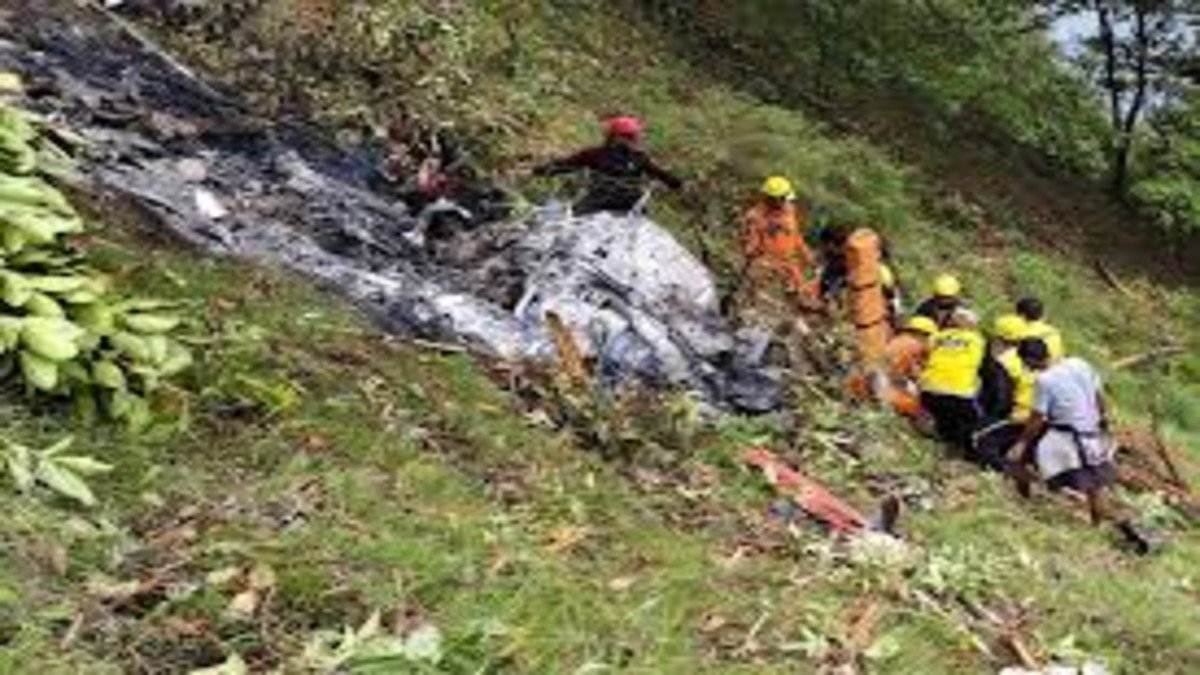
On June 15, 2025, a tragic helicopter crash near Gaurikund in Uttarakhand’s Rudraprayag district claimed the lives of all seven people aboard, including a 23-month-old infant and the pilot, Captain Rajbeer Singh Chauhan. The Aryan Aviation Pvt Ltd chopper, en route from Kedarnath Dham to Guptkashi, went down just minutes after takeoff at 5:20 am, engulfed in flames in the dense forests of Kedarghati. This devastating incident, the fifth helicopter mishap in Uttarakhand in just 40 days, has reignited concerns about the safety of air travel during the Char Dham Yatra, a pilgrimage that draws millions to the sacred Kedarnath shrine each year.
A Morning of Tragedy

The ill-fated helicopter took off from Kedarnath’s helipad at 5:19 am, carrying six passengers—five adults and a toddler—along with the pilot. According to officials, the chopper encountered severe weather conditions, including poor visibility due to dense fog and strong winds in the Kedar Valley. The pilot attempted to navigate out of the valley but lost control, leading to the crash between Gaurikund and Trijuginarayan. Local women cutting grass nearby spotted smoke rising from the forested crash site, prompting a swift response from the State Disaster Response Force (SDRF), National Disaster Response Force (NDRF), and local police. All seven aboard, identified as Rajkumar Jaiswal, Shraddha Jaiswal, their daughter Kashi Jaiswal, Vikram Singh Rawat, Vinod Negi, Tushti Singh, and Captain Rajbir Singh Chauhan, were charred beyond recognition in the wreckage.
A Troubling Pattern
This crash is not an isolated event. Uttarakhand’s rugged Himalayan terrain and unpredictable weather have made helicopter travel a high-risk endeavor, particularly during the Char Dham Yatra season, which sees around 400 sorties daily in the Kedarnath region alone. Just a week earlier, on June 7, a Kestrel Aviation helicopter en route to Kedarnath made an emergency landing on a highway due to a technical fault, with the pilot sustaining injuries but all five passengers escaping unharmed. On May 8, another crash near Gangotri Dham killed six, including five women and the pilot. A May 17 incident saw an AIIMS Rishikesh heli-ambulance crash-land near Kedarnath’s helipad due to a tail rotor malfunction, though all aboard survived. These incidents, coupled with a May 24 emergency landing by a Kestrel Aviation chopper, highlight a disturbing trend of mechanical failures and weather-related risks.

The Kedarnath region’s high-altitude environment, often exceeding 14,000 feet density altitude, pushes helicopters like the Eurocopter AS350B2 to their operational limits. Narrow valleys and sudden weather changes leave little margin for error, while the intense demand for flights—ferrying up to 33,000 pilgrims in a single month—strains both aircraft and pilots.
Regulatory and Operational Challenges
In response to the June 15 crash, Uttarakhand Chief Minister Pushkar Singh Dhami suspended helicopter services for two days and ordered the formation of a technical committee to draft a strict Standard Operating Procedure (SOP). The SOP mandates thorough technical inspections and real-time weather assessments before flights. The Directorate General of Civil Aviation (DGCA) had already reduced daily helicopter operations by 60 to enhance safety and is now reviewing further restrictions. Additionally, the licenses of two TransBharat Aviation pilots were suspended for six months after flying in unsuitable weather, and Aryan Aviation’s operations face scrutiny.
However, challenges persist. Aging helicopters, inconsistent maintenance, and pilot fatigue under pressure to meet tight schedules are recurring issues. The Uttarakhand Civil Aviation Development Authority (UCADA) has pushed for an air traffic control system to manage the region’s heavy flight volume, but implementation lags. The DGCA’s call for experienced pilots is a step forward, yet training for high-altitude, weather-challenged operations remains inadequate.
The Human and Environmental Toll
The human cost of the June 15 crash is heart-wrenching. The Jaiswal family from Maharashtra lost both parents and their toddler, leaving behind a grieving son who had stayed back. Captain Chauhan, an Indian Army veteran, was mourned by former Rajasthan CM Ashok Gehlot and West Bengal CM Mamata Banerjee, who expressed condolences on X. The tragedy underscores the personal toll of these accidents, which often claim devotees seeking spiritual solace.
Beyond the human loss, the environmental impact of unchecked helicopter activity is alarming. The Kedarnath region, already strained by over 50,000 daily visitors against a recommended capacity of 5,000, faces ecological degradation from noise pollution and fuel emissions. Landslides, like one on May 30 that killed a driver on the Kedarnath Highway, highlight the region’s fragility.
A Path to Safer Skies
Addressing this crisis demands urgent action. First, operators must prioritize fleet modernization and rigorous maintenance schedules, retiring outdated aircraft. Second, pilot training must focus on high-altitude navigation and emergency protocols in adverse weather. Third, real-time weather monitoring and a robust air traffic control system are non-negotiable to manage the region’s flight volume. The DGCA’s ongoing safety audits and operator compliance checks, including weather readiness reports and maintenance logs, must be strictly enforced.
Pilgrims can contribute by booking through official platforms like IRCTC to avoid unregulated operators. Long-term solutions, such as the proposed ropeway to Kedarnath, could reduce reliance on helicopters, easing both safety and environmental pressures. Until then, capping daily visitors and flights may be necessary to protect both devotees and the delicate Himalayan ecosystem.
A Sacred Journey at Stake
The Kedarnath pilgrimage is a profound act of faith, but the skies above it have become a gamble. The June 15 crash is a stark reminder that safety cannot be sacrificed for convenience or profit. As Chief Minister Dhami prayed to Baba Kedar for the safety of travelers, the onus lies on regulators, operators, and pilgrims to ensure that devotion does not come at the cost of lives. Only through decisive action can the journey to Kedarnath remain a path to divinity rather than tragedy.
also read: From Takeoff to Tragedy: The Air India Flight 171 Crash in Ahmedabad
Last Updated on: Sunday, June 15, 2025 10:01 pm by Rishi Akkaraju | Published by: Rishi Akkaraju on Sunday, June 15, 2025 9:58 pm | News Categories: India

Leave a Reply